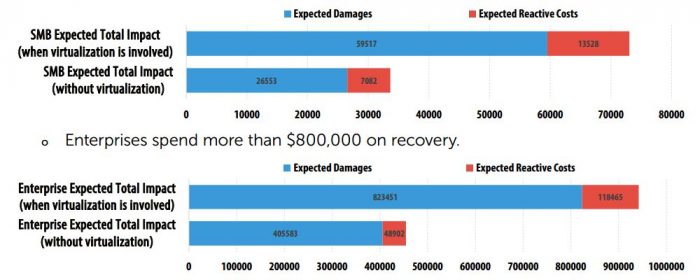Kaspersky Endpoint Security for Mac: a new version is available
Kaspersky Lab has just released a new version of Kaspersky Endpoint Security for Mac, specifically for Mac-savvy businesses.
1278 articles
Kaspersky Lab has just released a new version of Kaspersky Endpoint Security for Mac, specifically for Mac-savvy businesses.

A new Kaspersky Lab report finds businesses pay a significant premium to recover from a cyber attack if the virtual infrastructure is affected during the incident.

A look at what the “threat landscape” is comprised of for businesses.

The BlueTermite APT campaign is rather new and extremely persistent. Here’s why.

These days, the propagation of zero-day exploits occurs almost literally at the speed of light. As soon as such useful exploit makes it to the public, APT authors can begin

The experience of forgetting information you trust a digital device to remember for you is called Digital Amnesia. Digital Amnesia’s impact on businesses can range from mere inconvenience to something far more serious.

Kaspersky Lab has just received a trove of new awards for one of its business products, Kaspersky Small Office Security.

Kaspersky Lab has just released its Q2 report on DDoS activities on the Web, showing that this part of the global threat landscape is extremely volatile and permanently evolving.

It’s not feasible to call a security solution, either for individual users or for businesses, “an antivirus.” There’s more than that.

Kaspersky Lab experts have investigated a new series of attacks by the Darkhotel cybercriminal group. Here are the details.

Kaspersky Lab has rolled out a new cyberthreats report covering Q2. While it is consumer-oriented, certain findings are extremely relevant to business.

Is it still correct to use the term “antivirus?” Cybersecurity today is much more than just antiviruses; still essential, but alone it is no longer enough.

Apple patched a serious issue in its App Store and iTunes Store, which could have undermined many of the businesses working in this ecosystem.

Windows 10 was launched to general availability on July 29th. The feedback so far is mixed, which isn’t unusual with new versions of Windows. Some say it’s the best Windows since XP, some call for caution. Security-wise and business-wise it looks promising.

Since Windows 10 arrived two days ago, new security-related concerns have surfaced. First and foremost, they’re about control over the data on Windows 10-based PCs and other devices.

Among all of its promised security enhancements, Microsoft also said that updates will be performed as a “service”: Users will receive new features at no charge for the “supported lifetime” of the device it is installed on.

It’s up to the manufacturers to change the approach to designing modern hi-tech equipment. As we have written before, security should come first. It must be taken in account at the design level, not added later.

If it is not possible to get rid of a risky software for some reason, it is better to exist in a “presumption of guilt” mode, with an efficient security solution keeping it in check and preventing exploits from successful attacks, targeted ones included.

Top-level IT security pros believe there’s a significant, unaddressed gap between enterprise security priorities and the serious threats that keep them awake at night.

Minidionis is yet another backdoor from the same APT group responsible for CozyDuke, MiniDuke, and CosmicDuke – this time with some “cloud” capabilities.

These days, ransomware-related news stories look a bit like, well, war chronicles. In fact, this is the consequence of an elevated attention to this particular kind of threat; similar things occurred in early the 2000s when net-worms thrashed the Web.